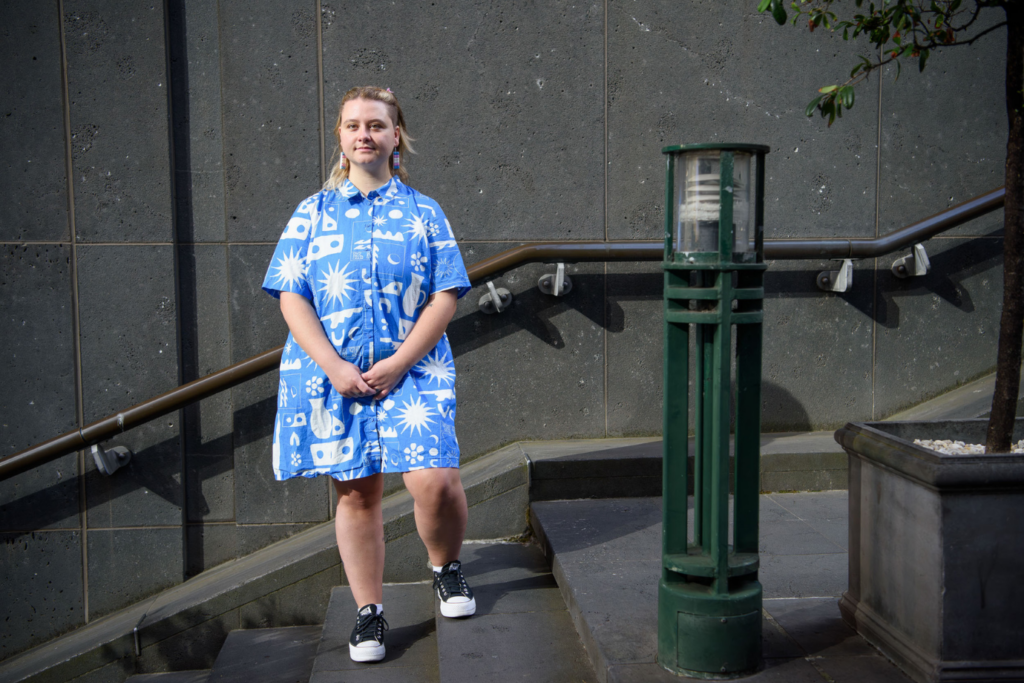Last year, I returned to my hometown of Cairns for what I thought would be a normal family Christmas. But in the days leading up to the holiday period, our beautiful coastal town was hit by the worst flood ever recorded.
Homes and businesses were lost and streets were destroyed, cutting off access to the more remote communities. It was the time of year when people were supposed to be celebrating but they were left picking up the pieces of their lives. Whilst helping with the flood relief, I saw young people showing up day after day, leading the clean-up and donation gathering efforts.
Over the last few months, we have watched apocalyptic scenes from southern Spain, where flash flooding killed hundreds of people. More than a year’s worth of rain fell in just eight hours in parts of Valencia, with nightmarish videos broadcast around the world of floodwaters dragging cars through the streets and leaving people clinging to trees and stranded on roofs. The climate crisis is not some far-off future, we are facing it right now.
As a 23-year-old young woman, I am part of the generation who will live our entire lives with the intensifying consequence of our world’s – and Australia’s – inaction on climate change. And so I exist in a dichotomous state of hopelessness and hopefulness. My hopelessness is fuelled by the negligence of the Australian government, who continue to approve coal mines in the face of our warming climate. The despair dug in deeper two weeks ago when Donald Trump, an avowed climate denialist, was re-elected to the White House. My hopefulness breaks through this despair when I see other young people take a stand against those who have no respect for our futures.
I’m not alone in these feelings. The Young People Your Say survey published by the City of Hobart, where I live, shows that the majority of Hobart youth are concerned about the impacts of climate change. The burden of emotion placed on our young people because of a problem they didn’t start, but feel they have a responsibility to solve, is heavy. It’s a burden I carry as I meet with Australian ministers and other powerholders, advocating for greater climate action, this week at the United Nations Climate Change Conference (COP29) in Azerbaijan this week.
COP29 brings together countries and world leaders to collectively and unanimously decide on our futures. For some, COP29 might feel abstract: how does it really impact my life down here in Hobart? For others, it may signify the crux of where true progress on climate change can be made through global collective effort. The truth is that progress is always slow, expectations are often left unmet and outcomes are never ambitious enough. But we need to start somewhere.
The big-ticket negotiation item at COP29 is climate finance. Climate finance is the enabler of climate action on mitigation, adaptation and loss and damage. It dictates who can adapt to the impending (and already occurring), extreme climate disasters. It determines how communities, especially those in the Global South, who have contributed least to climate change yet are bearing the brunt of disasters, can recover when these events hit. It drives forward the transition from fossil fuels to renewable energy. So what will the countries decide? What value will they place on our lives and the health of our environment?
Who better to hold the decision-makers accountable than the youth whose future they are debating. That’s why I am at COP29 with Plan International Australia: to amplify the voices of young Australians and their concerns on climate change, to ensure climate finance is gender– and youth-responsive and to hold the Australian government accountable to their actions.
Plan International Australia has also this week launched its Pacific Girls in a Changing Climate report – it is a sobering report told by documenting the stories of Pasifika girls on how climate change impacts every single part of their lives. Half of Pasifika girls said that climate disasters stopped them from attending school and one in five said they are food insecure. It is heartbreaking to read but it stands as further evidence for the Australian government to give more and emit less.
And yet, currently only the tiniest sliver of climate finance considers gender equality and less than one in 20 of all international climate development projects address the needs of girls. Young women and girls are being sidelined in climate action and recovery from disasters, despite being a group that is disproportionately impacted by climate change. The new climate finance goal needs to recognise this gap and commit to bridging it.
While it may dominate news headlines for a week or so, for most people, COP29 is and will remain abstract. Just 8 per cent of Hobart youth say that the government is responsible for solving climate change, but 79 per cent say that each and every one of us must contribute to the solution. A spark of hope ignites within me.
Here comes the passionate debate about whether individuals really should contribute towards climate change action. I’ve heard it many times before and I’m sure I’ll hear it many times again. Polluter pays – I wholeheartedly agree. There is no doubt in my mind that those who are largely responsible for the climate crisis need to pay for the damage they have caused. But I also believe that local actions and solutions, acted upon by the individuals within those communities, is key to effective climate action. Local solutions are not scalable because no ecosystem is the same.
Over 80 per cent of the young people the City of Hobart spoke to say that they are “unsure if one person’s actions will have an impact on the climate crisis”. I immediately consider the opposite of this: if no one acts, there is a guarantee that there will be no positive impact. When we act locally as individuals, we form a collective action. Through collective action, and as the saying goes, there is power in numbers. Just as there was last year in Cairns when we came together to clean up and provide relief to those that had lost their livelihoods. It’s where people can connect with community and deepen their connection with nature. More importantly to me, it’s where I find the hope amongst the hopelessness.

